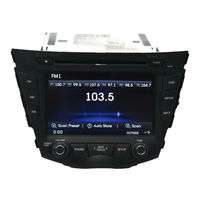Hyundai Veloster Manuals
Manuals and User Guides for Hyundai Veloster. We have 8 Hyundai Veloster manuals available for free PDF download: Owner's Manual, User Manual, Brochure & Specs, Quick Reference Manual
Hyundai Veloster Owner's Manual (390 pages)
Brand: Hyundai
|
Category: Automobile
|
Size: 4 MB
Table of Contents
Advertisement
Hyundai Veloster Owner's Manual (406 pages)
Brand: Hyundai
|
Category: Automobile
|
Size: 8 MB
Table of Contents
Hyundai Veloster Owner's Manual (69 pages)
Brand: Hyundai
|
Category: Car Navigation system
|
Size: 4 MB
Table of Contents
Advertisement
Hyundai Veloster User Manual (140 pages)
Car Multimedia System
Brand: Hyundai
|
Category: Car Video System
|
Size: 3 MB
Table of Contents
Hyundai Veloster Owner's Manual (70 pages)
Brand: Hyundai
|
Category: Car Navigation system
|
Size: 2 MB
Table of Contents
Hyundai Veloster Owner's Manual (54 pages)
Car AV System
Brand: Hyundai
|
Category: Car Receiver
|
Size: 3 MB
Table of Contents
Hyundai Veloster Quick Reference Manual (17 pages)
Brand: Hyundai
|
Category: Automobile
|
Size: 7 MB
Table of Contents
Hyundai Veloster Brochure & Specs (27 pages)
Hyundai Veloster
Brand: Hyundai
|
Category: Automobile
|
Size: 9 MB
Advertisement







